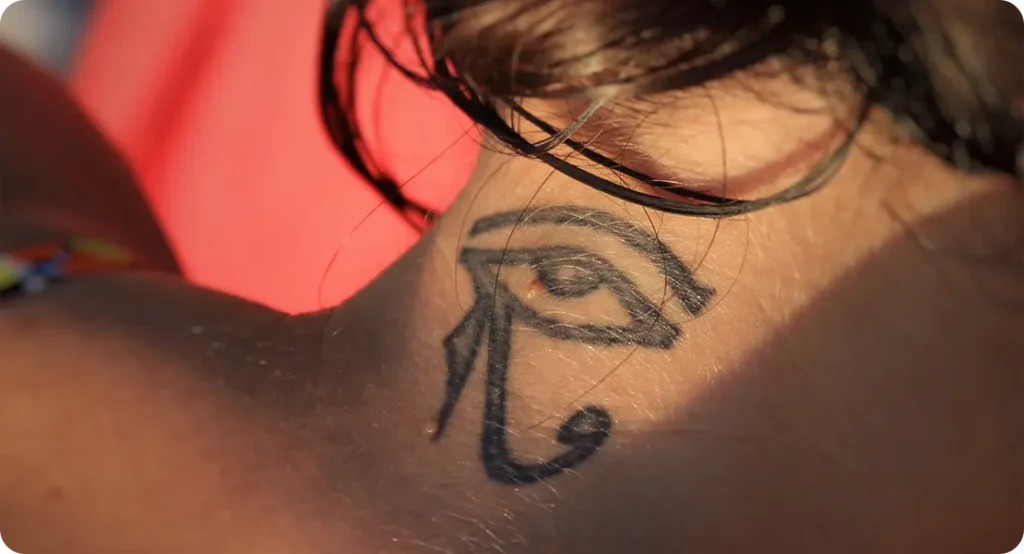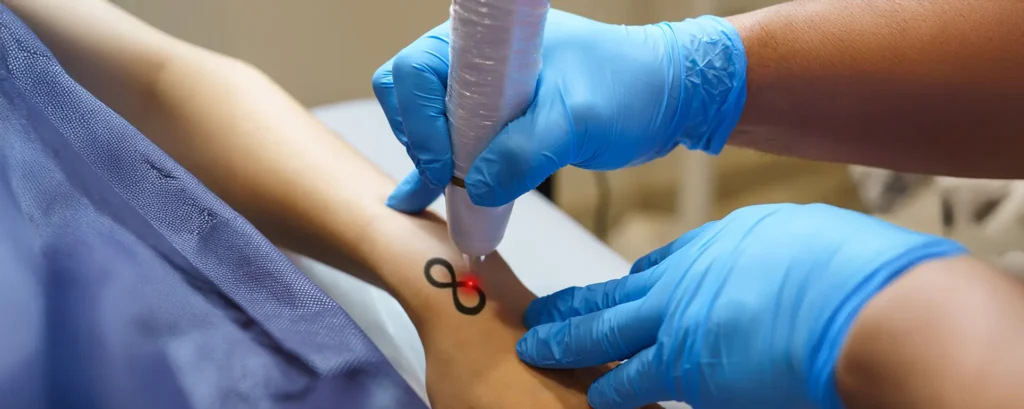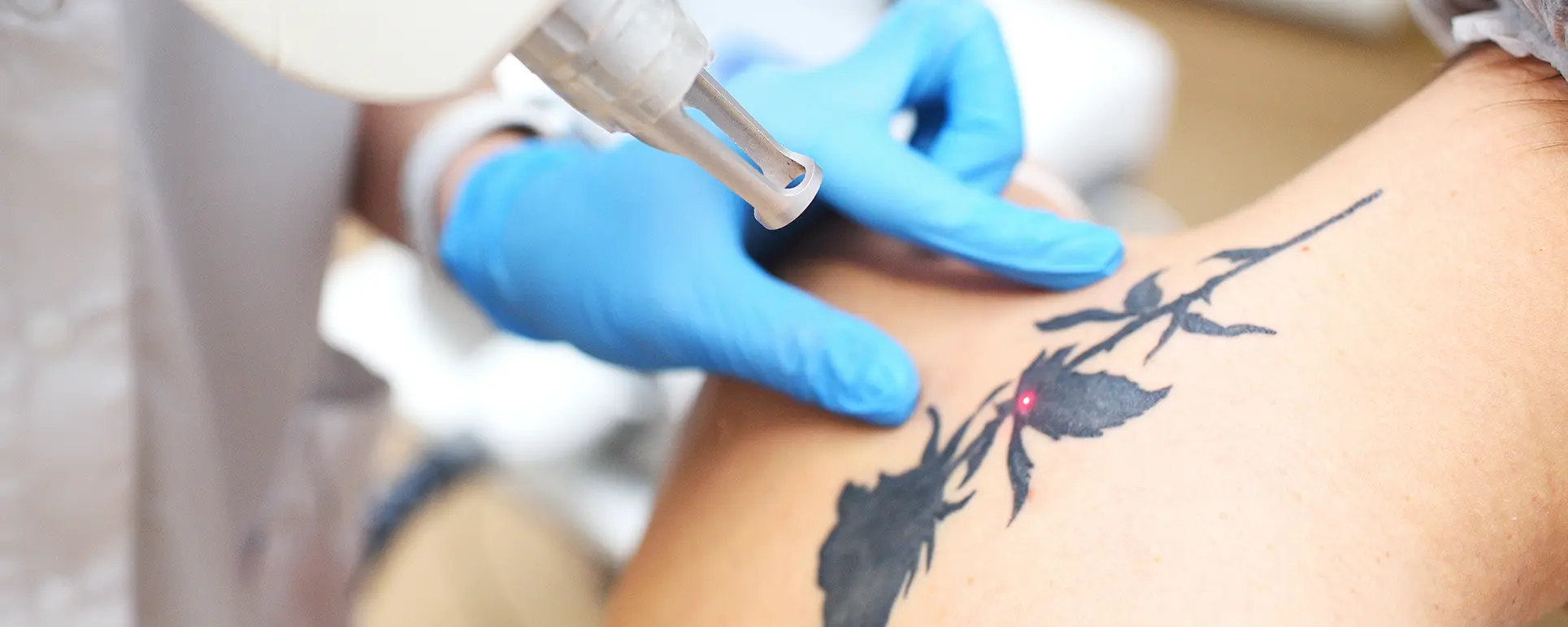Let’s face it tattoos don’t always age as gracefully as we hope. That edgy design from your twenties? The name of a past partner? Or perhaps a spur-of-the-moment decision you now regret? As life moves forward, it’s not uncommon to outgrow the ink that once felt meaningful. In fact, tattoo regret is becoming more widespread, and so is the demand for safer, smarter, and more effective removal solutions.
Luckily, the science of tattoo removal has come a long way.
We’re no longer limited to outdated laser systems that require a dozen or more painful sessions with patchy results and long healing times. Today, we’re entering a new era of precision tattoo removal one that combines medical innovation, AI technology, and holistic skin health to transform how tattoos are erased.
This next-generation approach is powered by three key advancements:
- Artificial Intelligence (AI) – helping dermatologists analyse tattoo structure, skin tone, and ink colour to build optimised treatment plans tailored to the individual.
- Perfluorodecalin (PFD) patches – transparent silicone patches that allow for multiple laser passes in a single session while protecting the skin from trauma and improving comfort.
- Immune-boosting post-treatment care – supporting the body’s natural clearance of ink particles through lymphatic drainage, hydration, and nutritional strategies.
Together, these innovations are dramatically improving outcomes reducing the number of sessions needed, shortening recovery times, and enhancing safety for all skin types, including Fitzpatrick IV–VI. What was once a drawn-out, uncertain process can now be faster, smoother, and much more skin-friendly.
And the best part? If you live in or around London, you’re at the epicentre of this transformation. Many of the UK’s leading dermatology and aesthetic clinics are already using these technologies making them accessible to anyone looking to part ways with unwanted ink.
In this article, we’ll explore:
- How AI is personalising tattoo removal
- What PFD patches do and why they’re a game-changer
- How immune-boosting techniques support your skin’s healing
- What all this means for your laser tattoo removal journey especially if you’re getting it done in London
So whether you’re considering a clean slate or just want to fade an old design for a cover-up, these breakthroughs are giving people more control over their skin and their stories than ever before.
Why Tattoo Removal Needed an Upgrade

If you’ve explored laser tattoo removal in the past, you’ll know that the experience hasn’t always lived up to expectations. While traditional Q-switched lasers and even some early picosecond lasers did succeed in breaking down ink, the process could often feel like a test of patience and endurance.
Let’s take a closer look at some of the common frustrations associated with earlier laser technologies:
- A long treatment journey: It wasn’t uncommon for patients to require 10 to 15 sessions sometimes more spread out over many months or even years. This meant a significant time commitment, often with no guarantee of complete removal.
- Physical discomfort: Many people found the procedure uncomfortable, likening the sensation to repeated snaps of a rubber band against the skin. After each session, it was also normal to experience redness, swelling, or blistering, which made recovery less than pleasant.
- Risk of side effects: Older lasers delivered energy using longer pulse durations, which increased the likelihood of heat damage to the surrounding skin. This, in turn, led to a higher risk of scarring or changes in skin pigmentation especially for people with medium to darker skin tones (Fitzpatrick types IV to VI).
- Limited effectiveness on certain tattoos: Multicoloured designs, older tattoos with deeply embedded ink, or ones that had already faded unevenly were often difficult to fully erase. Colours like green, yellow, and blue responded poorly to many older laser wavelengths.
While these methods were considered cutting-edge at one time, the limitations were clear especially for people looking for faster, cleaner, and safer results.
That’s exactly where today’s next-generation laser technologies including more advanced picosecond and nanosecond systems are changing the game. By improving precision, reducing side effects, and making treatments more effective across different tattoo types and skin tones, these innovations are offering a much more streamlined path to clear skin.
1. AI-Powered Treatment Planning
One of the most exciting frontiers is artificial intelligence (AI). You may not expect AI to have a role in tattoo removal but trust me, it’s already proving invaluable.
What Is It?
AI in tattoo removal uses algorithms to analyse your tattoo and recommend the most effective laser parameters for your specific situation. This includes:
- Wavelength settings for different ink colours
- Pulse durations for optimal energy delivery
- Skin type and tone considerations to reduce side effects
- Predictive healing and immune response tracking
Why It Matters
Everyone’s skin is different and so are their tattoos. AI helps create hyper-personalised treatment plans based on:
- Your skin’s melanin levels
- Tattoo depth and ink density
- Area of the body
- History of fading or prior treatments
This not only reduces trial-and-error but can shorten the overall treatment journey.
What’s Available Now?
While not yet standard everywhere, several clinics including some in London are starting to trial AI-powered diagnostic tools to support dermatologists during consultations. Over time, we’ll likely see these systems become part of the mainstream.
2. Perfluorodecalin (PFD) Patches
If you haven’t heard of PFD patches before, you’re not alone but they’re quickly becoming a dermatologist’s favourite companion to laser removal.
What Is a PFD Patch?
A PFD patch is a transparent silicone-like patch infused with perfluorodecalin, a medical-grade liquid used to dissolve gas bubbles created during laser treatment.
When applied over a tattoo, the patch:
- Clears the white “frosting” that forms from gas buildup
- Allows multiple laser passes in one session
- Reduces pain and thermal damage to the skin
Benefits for Patients
If you’re someone who’s anxious about discomfort or drawn-out sessions, PFD patches can make a huge difference:
- Fewer appointments needed – Multiple passes in one session means more ink cleared per visit
- Faster healing – Less irritation and better skin recovery
- Better results – More energy reaches the ink without damaging surrounding tissue
Are PFD Patches Safe?
Yes PFD is non-toxic and has been safely used in ophthalmic and dermatologic treatments for years. It’s particularly promising for people with sensitive skin or darker skin tones, where avoiding inflammation is key.
3. Immune-Boosting Techniques
Here’s something many people don’t realise: Your immune system is the real star of tattoo removal. The laser simply breaks the ink into smaller fragments the rest is up to your body to clear away.
So what if we could give your immune system a helping hand?
Enhancing the Natural Clearance Process
Emerging research is exploring how to stimulate immune function before, during, and after tattoo removal. This might include:
- Topical immune modulators applied before sessions
- Laser-assisted immunotherapy to improve lymphatic drainage
- Supplements or lifestyle strategies that improve phagocyte function (the cells that “digest” broken-down ink)
What We Know So Far
One exciting area of research is in laser-assisted drug delivery (LADD). This technique opens micro-channels in the skin, allowing immune-enhancing agents to be delivered directly to the treated area. Early trials suggest faster ink clearance and reduced inflammation.
Other studies are looking at the role of immune checkpoint inhibitors already used in cancer therapy to see if they might temporarily boost macrophage activity.
How These Innovations Work Together

What makes the latest developments in tattoo removal especially promising is how multiple technologies can now be combined to deliver better, faster, and safer results. Rather than relying on a single solution, clinics are beginning to adopt a more holistic, tech-enhanced approach one that integrates smart diagnostics, advanced laser techniques, and immune system support.
Let’s break down how these innovations complement one another in real-world treatment settings:
AI-Powered Treatment Mapping
Artificial intelligence is transforming how dermatologists assess and plan tattoo removal. By analysing your tattoo’s colour, depth, size, and skin tone, AI-driven tools can recommend the most efficient laser settings, pulse durations, and wavelengths for your individual case. This eliminates guesswork and ensures a highly personalised, targeted treatment strategy right from the start.
PFD Patches for Enhanced Laser Performance
During laser sessions, the use of perfluorodecalin (PFD) patches has become a game-changer. These transparent patches are placed directly over the tattoo and allow practitioners to perform multiple laser passes in one session without causing additional trauma to the skin.
Benefits of PFD patches include:
- Faster ink clearance
- Less skin whitening or frosting during treatment
- Reduced discomfort and downtime
They essentially amplify the effects of the laser while protecting your skin especially helpful when treating stubborn or multi-coloured tattoos. - Immune-Support Protocols Post-Treatment
What happens after the laser breaks up the ink is just as important as the session itself. Your body relies on its lymphatic system to gradually flush away the fragmented ink particles.
That’s why some clinics now integrate immune-boosting strategies into their treatment plans ranging from nutritional advice and supplements to hydration reminders and lymphatic massage. A stronger immune response means quicker fading between sessions and more thorough ink removal overall.
What This Means for You (Especially in London)
If you’re based in London or planning to have your tattoo removed here you’re in luck. The city is home to some of the most advanced dermatology and laser clinics in the UK, many of which are already integrating next-generation technologies like picosecond lasers, AI-guided protocols, PFD patches, and immune-enhancing aftercare into their treatment offerings.
What does that mean for you as a patient?
Here’s what you can likely expect from a modern tattoo removal experience in London:
- Shorter Treatment Timelines
Thanks to the speed and precision of picosecond lasers and enhancements like PFD patches you may only need half the number of sessions compared to older Q-switched systems. What once took 10 to 15 visits might now be achieved in just 4 to 8 appointments, depending on your tattoo’s size, colour, and placement. - Greater Comfort During and After Treatment
With less heat transfer, faster ink fragmentation, and fewer passes needed per session, many patients report significantly less discomfort. Redness, swelling, and blistering are also reduced, which means a more comfortable recovery and quicker return to normal activities. - More Consistent Results Across Tattoo Types
Whether your tattoo is multi-coloured, older, or densely inked, modern laser systems and AI-guided mapping offer more even, predictable fading. You’re more likely to see consistent progress from session to session without the patchiness or ghosting that older lasers sometimes left behind. - Improved Safety for All Skin Tones
Historically, laser tattoo removal carried higher risks for those with medium to dark skin tones, often leading to pigmentation issues. But today’s advanced lasers are far more precise and skin-type sensitive making treatment safer and more effective for Fitzpatrick skin types IV to VI, as well as for more delicate areas like the face, neck, or hands.
Key Questions to Ask at Your Consultation
Before you commit to a tattoo removal treatment plan, it’s essential to have a thorough consultation with your dermatologist or laser specialist. Asking the right questions not only helps you understand the process it also ensures you’re choosing a clinic that uses the most advanced tools and safest protocols for your skin and tattoo type.
Here are some important questions to bring up during your consultation:
- Do you use picosecond lasers, and are PFD patches available?
Not all clinics use the latest equipment. Picosecond lasers offer faster results with fewer side effects, and PFD patches can allow multiple laser passes in one session so it’s worth confirming if these are part of the clinic’s standard treatment. - How do you assess tattoos with complex colours or deeper ink layers?
Tattoos with shades like green, blue, yellow, or those that have been touched up multiple times often require specialised laser settings. Ask how the practitioner evaluates and approaches these more challenging cases. - Do you offer AI-assisted diagnostics or personalised laser mapping?
AI tools can help practitioners tailor the treatment to your unique tattoo and skin tone, optimising outcomes and reducing guesswork. Clinics that incorporate this technology are often at the forefront of modern laser dermatology. - What kind of aftercare or immune-support protocols do you recommend?
Tattoo removal doesn’t end when the laser session does. Proper aftercare including skin protection, hydration, and possibly immune-boosting strategies can speed up ink clearance and reduce risks. Ask if the clinic offers post-treatment guidance or support to help your body heal and flush out ink efficiently. - Can you show before-and-after images from similar cases?
Reputable clinics should have a portfolio of real patient results. Ask to see photos of patients with tattoos similar to yours, especially if you have darker skin, a coloured tattoo, or one in a sensitive area. This can give you a realistic idea of what to expect.
Frequently Asked Questions
- How is AI used in tattoo removal?
AI helps dermatologists analyse your tattoo’s depth, colour, and skin type to create a tailored treatment plan. It improves accuracy, safety, and results. - What are PFD patches and why are they used?
PFD (perfluorodecalin) patches reduce laser side effects and allow for multiple laser passes in one session. This means faster results and less skin trauma. - Are PFD patches safe for all skin types?
Yes, PFD patches are safe for all skin tones, including darker skin, as they reduce thermal damage and risk of pigmentation changes. - Can immune-boosting methods really speed up tattoo removal
Yes emerging research shows that strengthening the immune system helps your body break down and clear tattoo ink more efficiently after laser treatment. - How many sessions will I need with these new techniques?
With AI-guided planning, PFD patches, and immune support, some patients may need only 4–8 sessions instead of 10–15 with older methods.
Final Thought: Smarter Solutions for Clearer Skin
Tattoo removal has come a long way. No longer a one-size-fits-all process, it’s now smarter, safer, and more science-driven than ever. AI, PFD patches, and immune-focused strategies are changing the rules reducing session numbers, improving colour clearance, and protecting your skin. If you’re exploring tattoo removal in London, it’s worth seeking a clinic that embraces these advancements. You can get in touch with us to book a consultation at our tattoo removal clinic in London to explore how these technologies can give you the best results for your skin and your future.
References
- Biesman, B.S. & Costner, C., 2017. Evaluation of a transparent perfluorodecalin‑infused patch as an adjunct to laser‑assisted tattoo removal: A pivotal trial. Lasers in Surgery and Medicine, 49(4), pp.335–340. DOI: 10.1002/lsm.22659. Available at: https://pubmed.ncbi.nlm.nih.gov/28319270/
- Vangipuram, R., Hamill, S.S. & Friedman, P.M., 2019. Perfluorodecalin–infused patch in picosecond and Q‑switched laser‑assisted tattoo removal: Safety in Fitzpatrick IV–VI skin types. Lasers in Surgery and Medicine, 51(1), pp.23–26. Available at: https://pubmed.ncbi.nlm.nih.gov/30311666/
- Reddy, K.K. et al., 2013. Topical perfluorodecalin resolves immediate whitening reactions and allows rapid effective multiple pass treatment of tattoos. Lasers in Surgery and Medicine, 45(2), pp.76–80. Available at: https://pubmed.ncbi.nlm.nih.gov/23255145/
- [Systematic Review] Immune response in laser tattoo removal: A systematic review. 2022. Journal of Dermatological Science, compiled 2021–2022. Available at: https://www.ncbi.nlm.nih.gov/pmc/articles/PMC10843227/
- Wang, Y. et al., 2021. Photoacoustic‑monitored laser treatment for tattoo removal: A feasibility study. arXiv preprint, arXiv:2105.12288. Available at: https://arxiv.org/abs/2105.12288
